Mushrooms are versatile and delicious ingredients that can be found in many dishes around the world. While some varieties are readily available at your local grocery store, others are considered a delicacy and can only be found on the black market or through specialty suppliers. These expensive mushrooms are highly sought after for their unique and often mild or nutty flavor, as well as their medicinal properties.
Some of the most expensive mushrooms in the world include boletus edulis, also known as the king bolete or porcini mushroom, enoki mushrooms, European white truffles, lion’s mane mushrooms, matsutake mushrooms, and more. These mushrooms grow in specific environments, such as mature oak or red pine trees, and are often harvested by skilled truffle hunters. While they can be used in a variety of dishes, they are particularly popular in stir-fries and other Asian-inspired cuisine. Despite their high price tag, these edible mushrooms are considered a luxury item by many food enthusiasts. In this article, we will take a look at some of the most expensive mushrooms in the world, their characteristics, and the factors that contribute to their high price tag.
10 Most Expensive Mushrooms In The World
| Mushrooms Name | Mushrooms Price |
| Shiitake Mushroom | $15 per pound |
| Lion’s Mane Mushrooms | $20 per pound |
| Boletus | $60 per pound |
| Flammulina velutipes | $120 per pound |
| Chanterelle Mushroom | $240 per pound |
| Morel Mushrooms | $280 per pound |
| Black Truffles | $800+ per kilo |
| Matsutake Mushroom | $2,000+ per kilo |
| Cordyceps Sinensis | $30,000+ per kilo |
| White Truffles | It was auctioned for a sky-high price of 200,000 US dollars / 1.08 kilograms |
Shiitake Mushroom

Shiitake Mushroom is the 10th most expensive mushroom in the world. The shiitake mushroom is a type of edible mushroom native to East Asia. It is commonly used in Asian cuisine, particularly in soups and stir-fries. Shiitake mushrooms have a meaty, slightly smoky flavor and a chewy texture. They are also rich in nutrients, including vitamin D, potassium, and copper. In addition to being used for culinary purposes, shiitake mushrooms have been used for centuries in traditional Chinese medicine for their various health benefits, including boosting the immune system, reducing cholesterol levels, and improving cardiovascular health.
Lion’s Mane Mushrooms
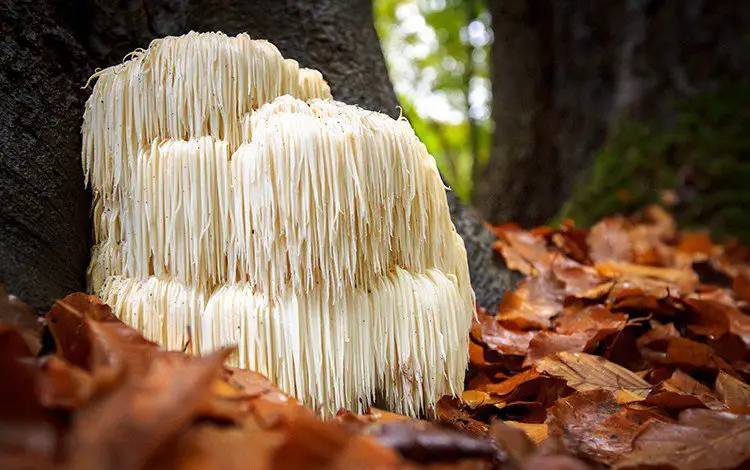
Lion’s Mane Mushrooms is the 9th most expensive mushroom in the world. Lion’s mane mushrooms, also known as Hericium Erinaceus, are a type of edible mushroom that is native to North America and Asia. They have a distinctive appearance, with a white or cream-colored body and long, cascading tendrils that resemble a lion’s mane.
Lion’s mane mushrooms are known for their health benefits, including their ability to boost the immune system, reduce inflammation, and improve brain function. They are also a good source of antioxidants and are thought to have anti-aging properties.
Lion’s mane mushrooms can be found in the wild or grown commercially. They are typically cooked and added to soups, stews, and other dishes, but can also be eaten raw or made into supplements. They have a slightly crunchy texture and a mild, slightly sweet taste.
Boletus
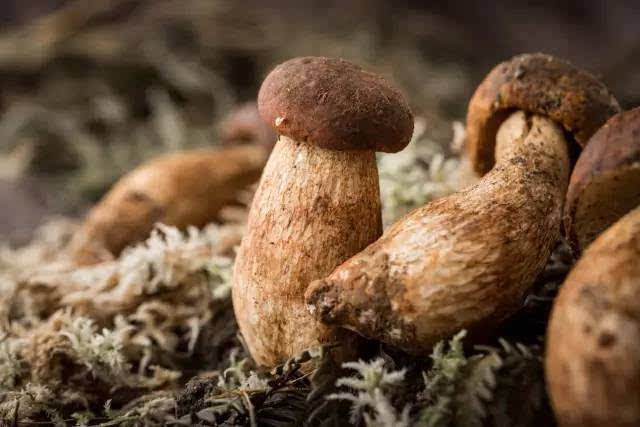
Boletus Mushrooms is the 8th most expensive mushroom in the world. Boletus mushrooms, also known as boletes, are a type of edible mushroom that belongs to the genus Boletus. They are known for their large, spore-bearing fruit bodies that grow on the ground and have a stem, cap, and pores instead of gills.
Boletus mushrooms are found in a variety of environments, including forests, meadows, and grasslands. They can be found throughout the world, including in North America, Europe, and Asia.
Boletus mushrooms are prized for their rich, meaty flavor and firm texture. They can be eaten raw or cooked in a variety of dishes, including soups, stews, and pasta.
Boletus mushrooms are also known for their medicinal properties and are believed to have anti-inflammatory and immune-boosting effects. They are also a good source of vitamins and minerals, including vitamin D, potassium, and iron.
However, it is important to be cautious when foraging for boletus mushrooms, as some species can be toxic if consumed. It is recommended to only collect boletus mushrooms from reputable sources or to have them identified by a trained mushroom expert before consuming.
Flammulina velutipes
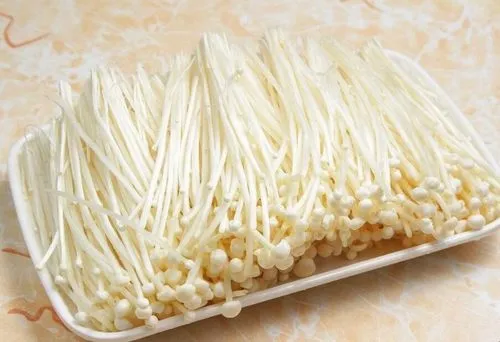
Flammulina velutipes is the 7th most expensive mushroom in the world. Flammulina velutipes, also known as the velvet shank or velvet foot mushroom, is a species of edible mushroom in the family Physalacriaceae. It is native to East Asia and has been introduced to other parts of the world, including Europe and North America. The mushroom is known for its distinctive velvet-like stem and its yellow-brown to dark-brown caps. It grows in clusters of dead or dying wood and is often found on tree stumps or fallen branches. Flammulina velutipes is a popular edible mushroom and is often used in soups, stir-fries, and other dishes. It is also used in traditional Chinese medicine.
Chanterelle Mushroom
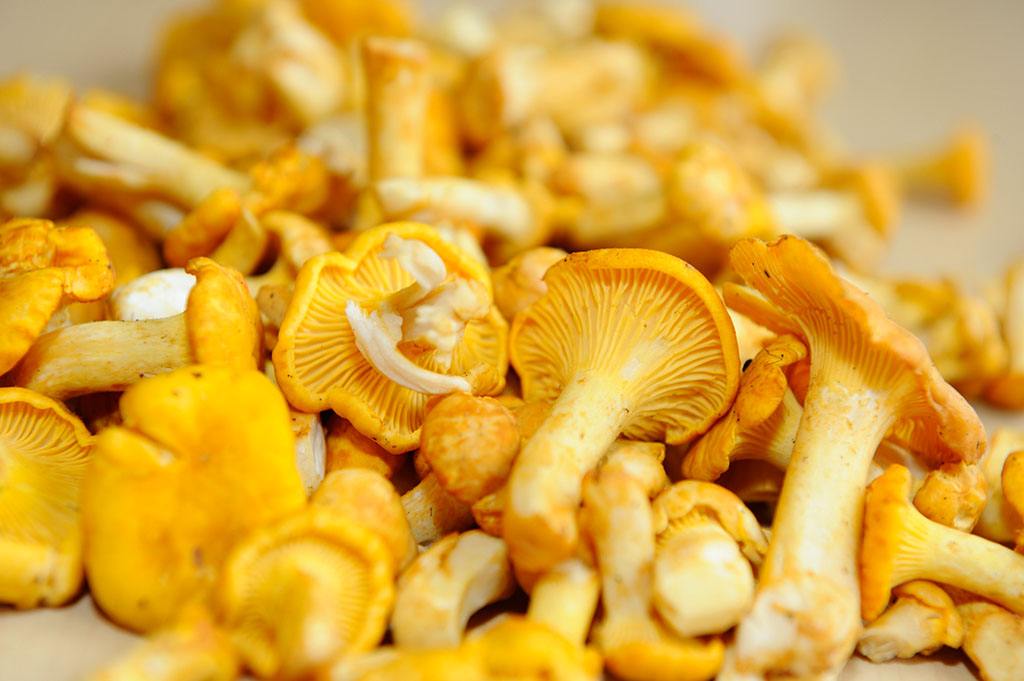
Chanterelle Mushroom is the 6th most expensive mushroom in the world. Chanterelle mushrooms are a type of edible mushroom that is known for their distinctive shape and bright orange color. They are often used in cooking and have a unique fruity, slightly spicy flavor. They are also known for their high nutritional value, as they are a good source of protein, fiber, and various vitamins and minerals. Chanterelle mushrooms can be found in the wild, but are also cultivated in some areas. They are commonly found in European and North American forests and are often foraged by mushroom hunters. They can be used in a variety of dishes, including soups, stews, sauces, and pasta dishes.
Morel Mushrooms
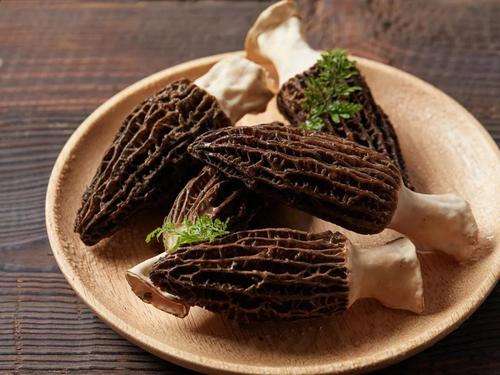
Morel Mushrooms is the 5th most expensive mushroom in the world. Morel mushrooms are a type of wild edible mushroom known for their distinctive honeycomb-like appearance and rich, nutty flavor. They are often found in wooded areas, especially after a wildfire, or in areas with a lot of dead trees. They are highly prized by mushroom hunters and are considered a delicacy in many parts of the world. Morel mushrooms can be cooked in a variety of ways, including sautéing, frying, and grilling, and are often used in dishes such as omelets, pasta, and sauces. They are also rich in nutrients, including protein, fiber, and antioxidants.
Black Truffles
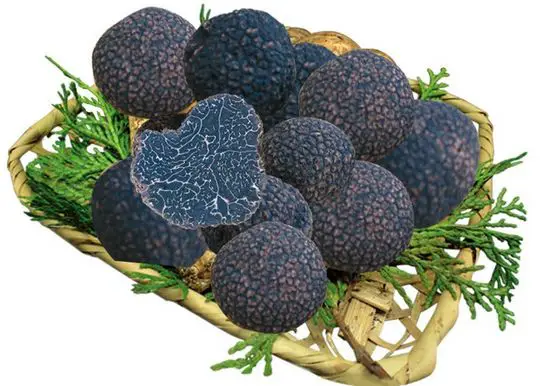
Black Truffles is the 4th most expensive mushroom in the world. Black truffles, also known as black Périgord truffles or Tuber melanosporum, are a type of edible fungi that are highly prized for their unique and intense flavor. They grow underground in the roots of certain trees, such as oak, hazelnut, and pine, and are found in certain regions of Europe, particularly in France and Italy.
Black truffles are typically harvested using specially trained dogs or pigs, who can detect the scent of the truffles and dig them up from the ground. They are then carefully cleaned and prepared for cooking, either fresh or preserved in oil or brine.
Black truffles are often used as a garnish or topping for dishes such as pasta, risotto, and steak, or shaved over salads and eggs. They are also used to flavor oils, sauces, and other condiments.
Due to their high demand and limited supply, black truffles are considered a luxury ingredient and can be quite expensive. However, they are prized by chefs and food connoisseurs for their unique and intense flavor, which has been described as earthy, musky, and slightly pungent.
Matsutake Mushroom
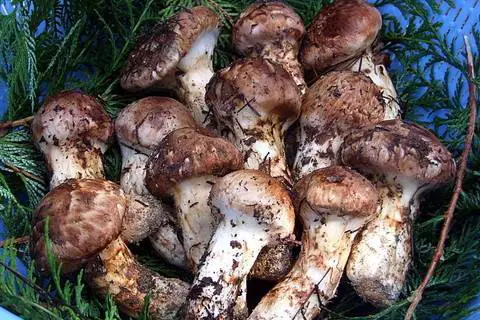
Matsutake Mushroom is the 3rd most expensive mushroom in the world. The matsutake mushroom is highly prized and sought-after in Japanese cuisine. It is known for its strong and pungent aroma, as well as its meaty and earthy flavor. The mushroom grows in the wild and is often found in areas with pine trees. It is typically harvested in the fall season and can be quite expensive due to its rarity and popularity. In Japanese culture, the matsutake mushroom is often given as a gift and considered a symbol of good luck and prosperity. It is used in a variety of dishes, including soups, stews, and rice bowls.
Cordyceps Sinensis
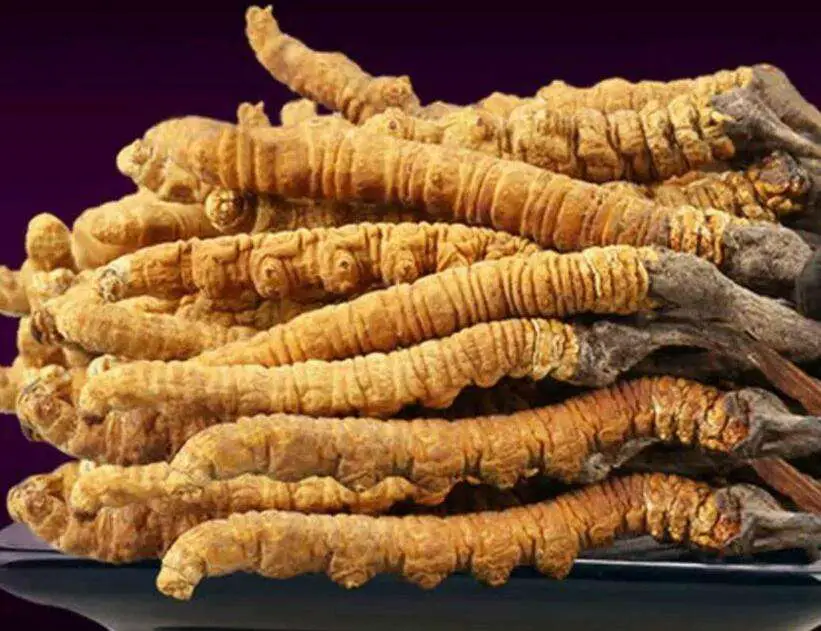
Cordyceps Sinensis is the 2nd most expensive mushroom in the world. Cordyceps Sinensis is a species of fungi that grows in the mountainous regions of China and Tibet. It is commonly known as “caterpillar fungus” due to its unique method of reproduction, in which it infects and grows within the body of a caterpillar before emerging from the ground as a mushroom.
Cordyceps Sinensis has been used in traditional Chinese medicine for centuries due to its believed health benefits, including improving energy and vitality, increasing endurance and athletic performance, and boosting the immune system. It is also believed to have anti-aging, anti-inflammatory, and anti-tumor properties.
However, there is limited scientific evidence to support these claims and more research is needed to fully understand the potential effects of cordyceps Sinensis on human health.
White Truffles
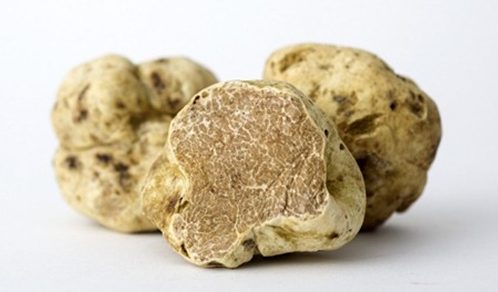
White Truffles is the most expensive mushroom in the world. White truffles, also known as Tuber magnatum, are a rare and highly prized type of truffle found in the Piedmont region of Italy. These truffles are known for their intense, earthy flavor and aroma, which has been described as a combination of garlic, cheese, and nuts. They are typically used as a finishing touch on dishes, grated over pasta, or added to sauces and dressings.
White truffles are highly sought after and can sell for thousands of dollars per pound. They are typically found in the fall and winter months and are often hunted by trained dogs or pigs. Due to their rarity and high demand, they have often been considered a luxury ingredient and are used sparingly in dishes.
Despite their high price and luxurious reputation, white truffles are not without controversy. The demand for white truffles has led to illegal truffle hunting, which has caused damage to the ecosystem and decreased the number of truffles available. Additionally, the high price of white truffles has led to fraud, with fake truffles being sold as the real thing.
Frequently Asked Questions
How to grow mushrooms?
- Purchase mushroom spawns or spores from a reputable supplier.
- Choose a suitable substrate for the type of mushroom you wish to grow. Common substrates include straw, sawdust, or manure.
- Sterilize the substrate by boiling it or using a pressure cooker.
- Mix the mushroom spawn or spores into the substrate, making sure to evenly distribute it.
- Place the mixture into a container with a lid, such as a plastic bag or mushroom kit.
- Keep the mixture at the proper temperature and humidity for the specific type of mushroom you are growing.
- Water the mixture regularly and provide proper ventilation.
- Once the mushrooms start to grow, harvest them by cutting them off at the base.
- Repeat the process to continue harvesting mushrooms.
How to cook mushrooms?
To cook mushrooms, you will need:
- A pan or skillet
- Some oil or butter (optional)
- Salt and pepper (optional)
Instructions:
- Wash the mushrooms under cold running water and pat dry with a paper towel.
- If you want to add some flavor, heat a small amount of oil or butter in the pan or skillet over medium heat.
- Add the mushrooms to the pan and sprinkle with a little salt and pepper (optional).
- Cook the mushrooms for about 5-7 minutes, or until they are browned and tender. Stir occasionally to ensure even cooking.
- Once the mushrooms are cooked, remove them from the pan and serve immediately. Enjoy!
How long do mushrooms last?
Mushrooms generally last 3-5 days in the fridge if stored properly in a sealed container or plastic bag. If they are fresh and undamaged, they may last slightly longer. However, it is best to use them within a few days to ensure optimal quality and taste. If you are not sure if your mushrooms are still good to eat, you can check for any visible signs of spoilage such as discoloration, sliminess, or strong odors. It is also important to note that dried mushrooms can last longer, up to several months, if stored in an airtight container in a cool, dry place.
How long do mushrooms last in the fridge?
Mushrooms can last for about a week in the fridge if they are stored properly. To store mushrooms, place them in a paper bag or wrap them in a damp paper towel and store them in the refrigerator crisper drawer. Avoid washing the mushrooms until you are ready to use them, as moisture can cause them to spoil more quickly. If the mushrooms start to look slimy or smell bad, it is time to toss them out.
How to clean mushrooms?
To clean mushrooms, follow these steps:
- Rinse the mushrooms under cold water to remove any dirt or debris.
- Gently pat the mushrooms dry with a paper towel or kitchen towel.
- If the mushrooms have a lot of dirt or debris on them, you can gently scrub them with a soft-bristled brush or a damp cloth. Be sure not to scrub too hard as this can damage the mushrooms.
- Trim off any stems that are damaged or browned, and slice off the very bottom of the stem if it looks dirty.
- If the mushrooms have a lot of dirt in the gills (the underside of the mushroom), you can carefully slice off the gills with a sharp knife.
- Slice or chop the mushrooms as desired for your recipe.
- If you want to store the mushrooms for later use, place them in a plastic bag or container and keep them in the refrigerator. They should stay fresh for up to a week.
Where to find morel mushrooms?
Morel mushrooms can be found in various locations, including:
- Wooded areas – Morels tend to grow in areas with a mix of hardwood trees and leaf litter, such as oak, elm, and ash forests.
- Burned areas – Morels are often found in areas that have recently burned, such as after a wildfire or controlled burn.
- Graveyards – Morels have been known to grow in graveyards, possibly due to the high levels of nutrients in the soil.
- Abandoned orchards – Morels have been known to grow in abandoned orchards, especially near old apple trees.
- Water sources – Morels are often found near water sources, such as streams, rivers, and creeks.
It is important to note that morels are wild mushrooms, and it is illegal to pick them on private property without permission. It is also important to be cautious when hunting for morels, as some varieties can be poisonous. It is recommended to forage for morels with an experienced mushroom hunter or to purchase them from a reputable source.
How to tell if mushrooms are bad?
There are several ways to tell if mushrooms are bad:
- Visual inspection: Look for any visible signs of decay or discoloration, such as spots or browning on the surface of the mushroom.
- Smell: If the mushrooms have a strong, unpleasant smell, they are likely bad and should be discarded.
- Touch: Mushrooms that are slimy or sticky to the touch may be spoiled.
- Age: If the mushrooms have been stored for an extended period, they may have started to spoil.
- Taste: If you are unsure about the freshness of the mushrooms, you can taste a small piece to see if they taste off or have an unpleasant flavor. If they do, they are likely bad and should be thrown out.
What is the world’s best mushroom?
Determining the “best” mushroom is subjective and depends on individual taste preferences, culinary uses, and nutritional considerations. There are thousands of mushroom species, each with its unique flavor profile, texture, and potential health benefits. Here are a few mushrooms that are widely regarded for their culinary and nutritional qualities:
- Porcini (Boletus edulis): Porcini mushrooms are highly prized for their rich, nutty flavor and meaty texture. They are often used in Italian and European cuisines and can be found fresh or dried.
- Morel (Morchella spp.): Morel mushrooms are known for their distinctive appearance with a honeycomb-like cap. They have a unique and earthy flavor and are highly sought after by chefs for their culinary versatility.
- Chanterelle (Cantharellus cibarius): Chanterelles have a delicate, fruity aroma and a mild, peppery taste. They are popular in French and Scandinavian cuisines and are often foraged in the wild.
- Shiitake (Lentinula edodes): Shiitake mushrooms are widely used in Asian cuisine and have a savory, umami flavor. They are also known for their potential health benefits.
- Maitake (Grifola frondosa): Maitake, also known as hen-of-the-woods, has a distinctive frilly appearance and a rich, earthy flavor. It is commonly used in Japanese and Chinese cuisines.
- Oyster Mushroom (Pleurotus ostreatus): Oyster mushrooms have a mild, anise-like flavor and a tender texture. They come in various colors and are versatile in culinary applications.
- Enoki (Flammulina velutipes): Enoki mushrooms are known for their long, slender stems and mild, slightly fruity flavor. They are commonly used in Asian cuisines, particularly in soups and salads.
- Lion’s Mane (Hericium erinaceus): Lion’s Mane mushrooms have a unique appearance and a mild, seafood-like flavor. They are often used as a meat substitute and are also associated with potential health benefits.
It’s important to note that while some mushrooms are highly regarded for their culinary qualities, others may be toxic or inedible. If you are foraging for wild mushrooms, it is crucial to have a deep understanding of mushroom identification or consult with an experienced forager to ensure safety.
The “best” mushroom ultimately depends on individual taste preferences and the specific culinary application. Exploring a variety of mushrooms and trying them in different dishes can be a delightful way to discover personal favorites.
Is growing Lion’s Mane profitable?
The profitability of growing Lion’s Mane mushrooms, or any mushroom, depends on several factors, including market demand, production costs, and the ability to efficiently cultivate and market the mushrooms. Here are some considerations:
- Market Demand: Understanding the market demand for Lion’s Mane mushrooms is crucial. Lion’s Mane has gained popularity for its unique appearance, flavor, and potential health benefits. If there is a strong demand in your local market or region, it can enhance the profitability of cultivation.
- Cultivation Techniques: Efficient and cost-effective cultivation techniques are essential. Lion’s Mane is a specialty mushroom with specific growth requirements. Understanding the optimal conditions for substrate preparation, inoculation, and fruiting is key to successful cultivation.
- Scale of Operation: The scale at which you plan to grow Lion’s Mane mushrooms influences profitability. Larger-scale operations may benefit from economies of scale, but smaller-scale or niche operations catering to specialty markets can also be profitable.
- Quality and Consistency: Consistently producing high-quality Lion’s Mane mushrooms is important for building a positive reputation in the market. Quality control measures and attention to detail in cultivation practices contribute to the overall success of the venture.
- Cost of Production: Calculating the cost of production involves considering expenses such as substrate materials, spawn, utilities, labor, and any required equipment. Minimizing production costs while maintaining quality is crucial for profitability.
- Marketing and Distribution: Developing effective marketing strategies and distribution channels is essential. Establishing relationships with local markets, restaurants, and specialty stores can contribute to sales success. Online platforms may also be utilized for broader reach.
- Educational Component: Some growers find success by incorporating an educational component into their business. Providing workshops, tutorials, or selling ready-to-grow Lion’s Mane mushroom kits to consumers interested in cultivating their mushrooms can be an additional revenue stream.
- Regulations and Compliance: Familiarize yourself with any local regulations or certifications that may be required for selling mushrooms. Compliance with food safety and quality standards is important for building trust with customers.
It’s recommended to conduct thorough market research and, if possible, start on a smaller scale to test the market and refine cultivation techniques. Additionally, networking with other mushroom growers, attending industry events, and staying informed about market trends can contribute to the success of a Lion’s Mane mushroom cultivation business. As with any agricultural venture, success may take time, dedication, and ongoing learning.
What is the most desirable mushroom?
The perception of the “most desirable” mushroom can vary among individuals based on culinary preferences, cultural traditions, and regional availability. Different mushrooms are prized for their unique flavors, textures, and uses in various cuisines. Here are a few mushrooms that are often considered highly desirable:
- Truffle (Various Species): Truffles are highly sought after for their intense, earthy aroma and distinctive flavor. Varieties such as black truffles (Tuber melanosporum) and white truffles (Tuber magnatum) are prized in gourmet cuisine.
- Morel (Morchella spp.): Morel mushrooms have a unique honeycomb-like appearance and a rich, earthy flavor. They are considered a delicacy and are often foraged in the wild.
- Porcini (Boletus edulis): Porcini mushrooms are known for their meaty texture and nutty, umami flavor. They are popular in Italian and European cuisines.
- Lion’s Mane (Hericium erinaceus): Lion’s Mane mushrooms are valued for their unique appearance, mild seafood-like flavor, and potential health benefits. They are sometimes used as a meat substitute.
- Chanterelle (Cantharellus cibarius): Chanterelles have a delicate, fruity aroma and a mild, peppery taste. They are highly regarded in French and Scandinavian cuisines.
- Shiitake (Lentinula edodes): Shiitake mushrooms have a savory, umami flavor and are widely used in Asian cuisine. They are versatile and can be used in various dishes.
- Matsutake (Tricholoma matsutake): Matsutake mushrooms are highly prized in Japanese cuisine for their aromatic, spicy aroma. They are often used in soups and rice dishes.
- Enoki (Flammulina velutipes): Enoki mushrooms are known for their long, slender stems and mild, slightly fruity flavor. They are commonly used in Asian cuisines, particularly in soups and salads.
The desirability of mushrooms can also be influenced by factors such as rarity, seasonality, and the specific culinary applications in which they are used. For example, truffles are often associated with luxury dining, while morels are eagerly anticipated during their short growing season.
Ultimately, the most desirable mushroom is subjective and depends on individual taste preferences and the culinary context in which the mushrooms are used. Exploring a variety of mushrooms and experimenting with different cooking methods can lead to the discovery of personal favorites.
What is the rarest mushroom to eat?
The rarity of mushrooms can vary depending on factors such as geographic location, seasonality, and the difficulty of cultivation or foraging. Additionally, the desirability and perceived rarity of mushrooms are often subjective. Here are a few mushrooms that are considered rare and are highly sought after:
- Truffles (Various Species): Truffles are among the rarest and most expensive mushrooms in the world. Black truffles (Tuber melanosporum) and white truffles (Tuber magnatum) are particularly prized for their distinctive aroma and flavor. Truffles are typically foraged with the help of trained dogs or pigs.
- Matsutake (Tricholoma matsutake): Matsutake mushrooms are highly valued in Japanese cuisine and are known for their aromatic and spicy fragrance. They grow in specific types of forests and are challenging to cultivate, contributing to their rarity.
- Himalayan Gold Oyster Mushroom (Pleurotus sp.): This particular variety of oyster mushroom, often referred to as the Himalayan Gold or Golden Oyster Mushroom, is prized for its vibrant golden-yellow color. It is relatively rare compared to more common oyster mushroom varieties.
- Devil’s Cigar (Chorioactis geaster): Also known as the Texas Star, the Devil’s Cigar is a rare mushroom species with an unusual appearance. It is endemic to Texas and Japan and is known for its cigar-like shape.
- Amethyst Deceiver (Laccaria amethystina): While not rare in the sense of being hard to find, the Amethyst Deceiver is considered a visually striking mushroom due to its vibrant amethyst color. It is a relatively small and edible mushroom.
- Caesar’s Mushroom (Amanita caesarea): Caesar’s Mushroom is highly regarded for its taste and is considered a delicacy. It is found in certain regions of Europe and is known for its orange color and distinctive appearance.
It’s important to note that foraging for wild mushrooms requires extensive knowledge of mushroom identification to avoid toxic varieties. Additionally, the conservation status of some mushroom species may be a concern, and ethical foraging practices are crucial.
For cultivated mushrooms, rarity may be determined by factors such as availability in the market, the difficulty of cultivation, and consumer demand. As the popularity of specialty mushrooms grows, more varieties may become accessible to consumers, even if they were once considered rare.
What is the prettiest mushroom?
Determining the “prettiest” mushroom is subjective, as beauty is often in the eye of the beholder. However, some mushrooms are widely admired for their striking colors, unique shapes, and overall aesthetic appeal. Here are a few mushrooms that are often considered particularly beautiful:
- Fly Agaric (Amanita muscaria): The Fly Agaric is iconic for its vibrant red cap adorned with white specks. It is a visually striking mushroom, often featured in folklore and fairy tales.
- Amethyst Deceiver (Laccaria amethystina): The Amethyst Deceiver is known for its vivid amethyst or lilac color. Its small size and radiant hue make it visually appealing in forest settings.
- Reishi Mushroom (Ganoderma lucidum): Reishi mushrooms, also known as Lingzhi, are admired for their glossy, lacquered appearance and vibrant colors, which can range from red to orange.
- Lion’s Mane (Hericium erinaceus): Lion’s Mane mushrooms are distinctive with their cascading white spines that resemble a lion’s mane. The appearance is both unique and visually appealing.
- Blue Mycena (Mycena interrupta): The Blue Mycena features a captivating blue coloration, making it stand out in forest environments. The color intensifies in damp conditions.
- Coral Fungus (Various Species): Coral fungi come in various shapes and colors, resembling underwater coral formations. Their intricate structures and vibrant hues contribute to their beauty.
- Golden Chanterelle (Cantharellus cibarius): Golden Chanterelles are not only prized for their culinary value but also their bright yellow to orange color and funnel-shaped appearance.
- Turkey Tail (Trametes versicolor): The Turkey Tail mushroom is named for its layered, fan-like appearance that resembles the tail feathers of a turkey. It features a spectrum of colors, contributing to its visual appeal.
- Enoki Mushroom (Flammulina velutipes): Enoki mushrooms are appreciated for their slender, elegant stems and small, delicate caps. They are often used in culinary dishes and have a unique appearance.
Remember that appreciating mushrooms for their beauty should be done with caution, especially in the wild. Some visually striking mushrooms can be toxic, and identification should be based on more than just appearance. If you’re interested in exploring and admiring mushrooms, consider doing so safely and knowledgeably, perhaps through organized mushroom walks, classes, or by consulting experienced mycologists.
What is America’s favorite mushroom?
While it’s challenging to pinpoint a single mushroom as “America’s favorite” since preferences can vary, certain mushrooms are widely enjoyed and commonly used in American cuisine. Among these, the White Button Mushroom (Agaricus bisporus) is one of the most popular and widely consumed mushrooms in the United States.
White Button Mushrooms are small to medium-sized with a mild flavor and a versatile culinary profile. They are commonly used in salads, soups, stir-fries, and various cooked dishes. Due to their mild taste and widespread availability, White Button Mushrooms are a staple in many households and restaurant kitchens.
Other mushroom varieties that are commonly enjoyed in the United States include:
- Crimini Mushrooms: Similar in appearance to White Button Mushrooms but with a slightly deeper flavor. They are often used interchangeably in recipes.
- Portobello Mushrooms: Larger and more mature than Crimini or White Button Mushrooms, Portobellos have a robust flavor and meaty texture. They are often grilled or used as a meat substitute.
- Shiitake Mushrooms: Shiitake mushrooms have a savory, umami flavor and are frequently used in Asian-inspired dishes, stir-fries, and soups.
- Oyster Mushrooms: Oyster mushrooms have a delicate texture and mild flavor. They are used in a variety of dishes, including stir-fries and soups.
- Chanterelle Mushrooms: While Chanterelles are often considered a delicacy and may not be as common in everyday cooking, they are appreciated for their unique appearance and mild, peppery taste.
- Maitake Mushrooms: Also known as Hen-of-the-Woods, Maitake mushrooms have a frilly appearance and a rich, earthy flavor. They are used in various culinary applications.
Preferences for mushrooms can vary by region, culinary tradition, and individual taste. The popularity of certain mushrooms may also shift as culinary trends evolve. Overall, mushrooms are a versatile ingredient enjoyed in a wide range of dishes across the United States.
What is the easiest mushroom to sell?
The ease of selling mushrooms can depend on various factors, including local market demand, consumer preferences, and the specific characteristics of the mushroom variety. However, some mushrooms are generally considered popular and relatively easy to sell due to their versatility, broad appeal, and use in various culinary applications. Here are a few mushrooms that are commonly sought after and may be easier to sell:
- White Button Mushrooms (Agaricus bisporus): White Button Mushrooms are one of the most widely cultivated and consumed mushrooms globally. They have a mild flavor and versatile culinary uses, making them popular in salads, soups, and various cooked dishes.
- Crimini Mushrooms (Agaricus bisporus): Also known as Baby Bella or Brown Mushrooms, Crimini mushrooms have a slightly deeper flavor than White Button Mushrooms. They are often used interchangeably in recipes.
- Portobello Mushrooms (Agaricus bisporus): Portobellos are larger, more mature versions of Crimini mushrooms and have a robust flavor and meaty texture. They are commonly used as a meat substitute in various dishes.
- Shiitake Mushrooms (Lentinula edodes): Shiitake mushrooms are popular in Asian cuisine and are known for their savory, umami flavor. They are versatile and can be used in stir-fries, soups, and other dishes.
- Oyster Mushrooms (Pleurotus spp.): Oyster mushrooms come in various colors and have a delicate texture and mild flavor. They are versatile and can be used in a variety of dishes.
- Maitake Mushrooms (Grifola frondosa): Maitake, also known as Hen-of-the-Woods, has a unique frilly appearance and a rich, earthy flavor. It is valued for its culinary uses.
When considering selling mushrooms, it’s essential to assess local market demand, explore potential distribution channels (such as farmers’ markets, local grocery stores, or restaurants), and understand any regulations or certifications required for selling mushrooms in your area. Additionally, cultivating or sourcing mushrooms from reputable suppliers is crucial to ensure quality and safety.
What is the smartest mushroom?
Mushrooms are fungi, and they lack a nervous system or brain, so they don’t possess intelligence in the way animals or humans do. However, some fungal networks and behaviors have been observed that exhibit a form of collective intelligence or adaptation. One notable example is the mycelial network of fungi, including certain species of mushrooms. Here are a few interesting aspects:
- Mycelial Networks: Underground mycelial networks, which are composed of thin threads called hyphae, play a crucial role in the life cycle of fungi. These networks facilitate the exchange of nutrients and information between individual fungi and even between different species of plants. This interconnected network has been likened to a “wood-wide web.”
- Adaptability: Fungi, including mushrooms, are known for their adaptability. Mycelial networks can respond to changes in the environment, such as nutrient availability or the presence of potential threats. This adaptability allows fungi to thrive in a variety of ecosystems.
- Communication: Fungi can communicate through chemical signaling. For example, when a part of the mycelium encounters a nutrient source, it can release signaling molecules to trigger the growth of nearby mycelial threads toward the resource.
While these behaviors demonstrate a form of sophisticated interaction, it’s essential to clarify that this is not intelligence in the same sense as the cognitive abilities of animals. Fungi lack a centralized nervous system and do not have sensory organs or consciousness.
In summary, while mushrooms and fungi display fascinating and intricate ecological interactions, attributing intelligence to them in the same way as animals or humans would be a misinterpretation of their biological processes and behaviors.













